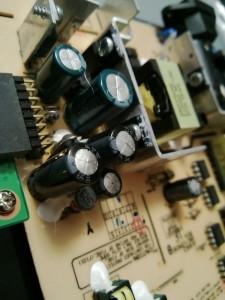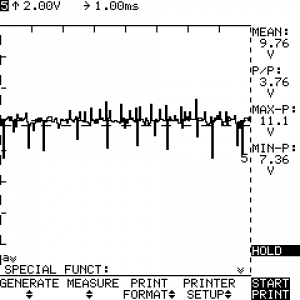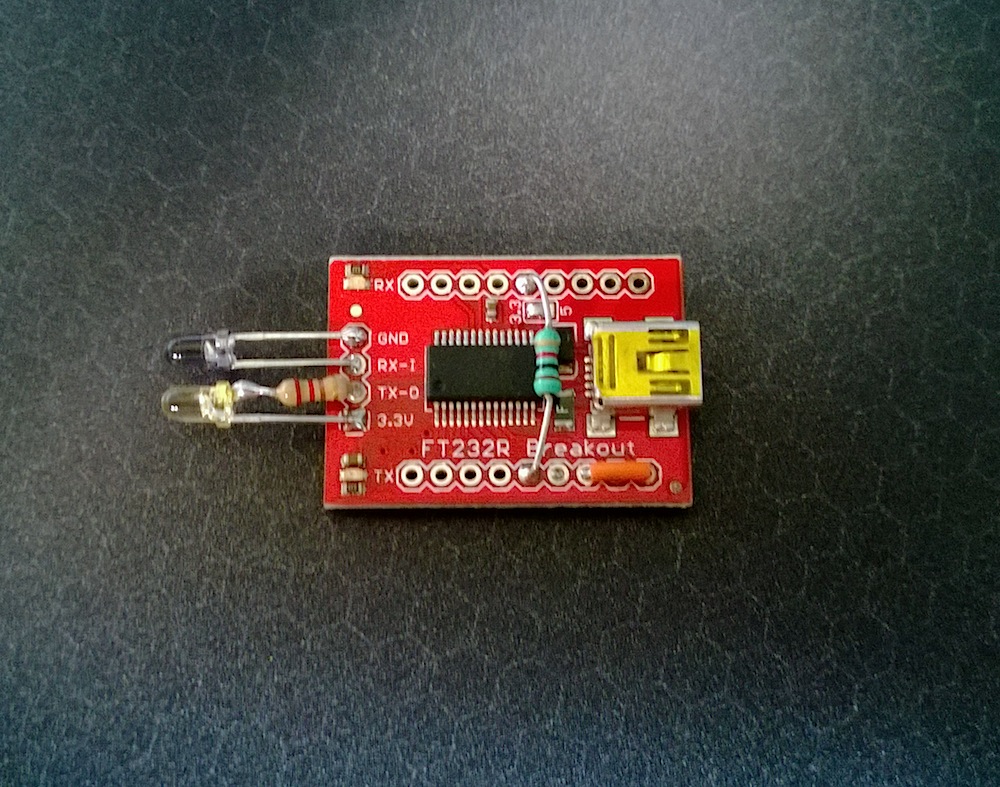I have a pair of Acer LCD monitors that I have used since 2006. They were super-cheap when I bought them, but have worked well enough over the years. Some time last year, one of the monitors started flickering when I turned it on, but after a minute or two it would stabilize. Then, it progressed to a point where it had dark lines skittering through the image the entire time it was on. Knowing that it was over 6 years old, I figured one of the backlight tubes was dying and I finally decided to take it apart.
This is what the screen would look like while it was on:
Annoying, to say the least.
I proceeded to totally disassemble the monitor. There were dozens of fragile plastic clips and dozens of stout metal clips, along with a bunch of very fragile looking, soldered-on flex cables (covered by a sheet of plastic repeatedly saying "DO NOT TOUCH"), but finally I got down to the point where I could see the individual backlight tubes. I plugged the monitor in, hit the power button, and… the tubes illuminated perfectly.
So I put it all back together — there are six or seven sheets of plastic and lots of critical alignment, but after doing it a few times I finally got the panel stack reassembled. I didn't take any photos at this stage, but you can see all the different parts over at this guy's blog.
At this point, I decided to take off the case covering the power supply and controller boards. Take a look at the power supply board.
See the cylindrical things near the left edge? Those are capacitors. Compare the black ones to the green ones. The tops are not supposed to be puffed out like that and they have actually failed. Looks like my monitor is a victim of the capacitor plague!
Capacitors serve a pretty important role in power supplies — they smooth the voltages produced and filter out noise.
Here is what the 12-volt rail looked like when I put an oscilloscope on it:
Instead of being 12 volts, it's 9.75 volts and has nearly 4 volts of noise on it! No wonder I have lines skittering through my screen!
I looked up the specs of the CapXon capacitors in the manufacturer's datasheet and found ones on DigiKey with nearly identical specs in the Panasonic FC series. Looks like replacing those four capacitors is going to cost a whopping $2.76.
For the rest of the story, see Part II, wherein I install the capacitors!






